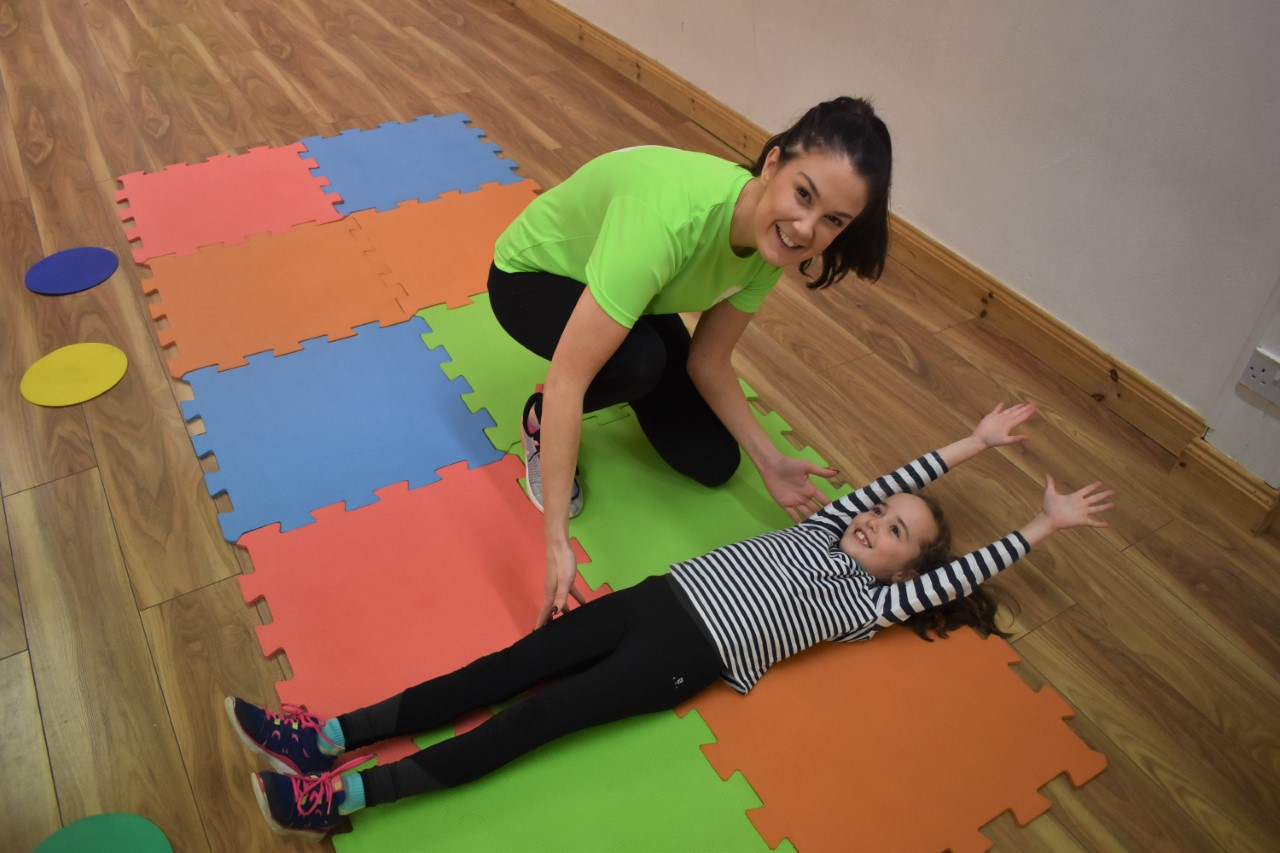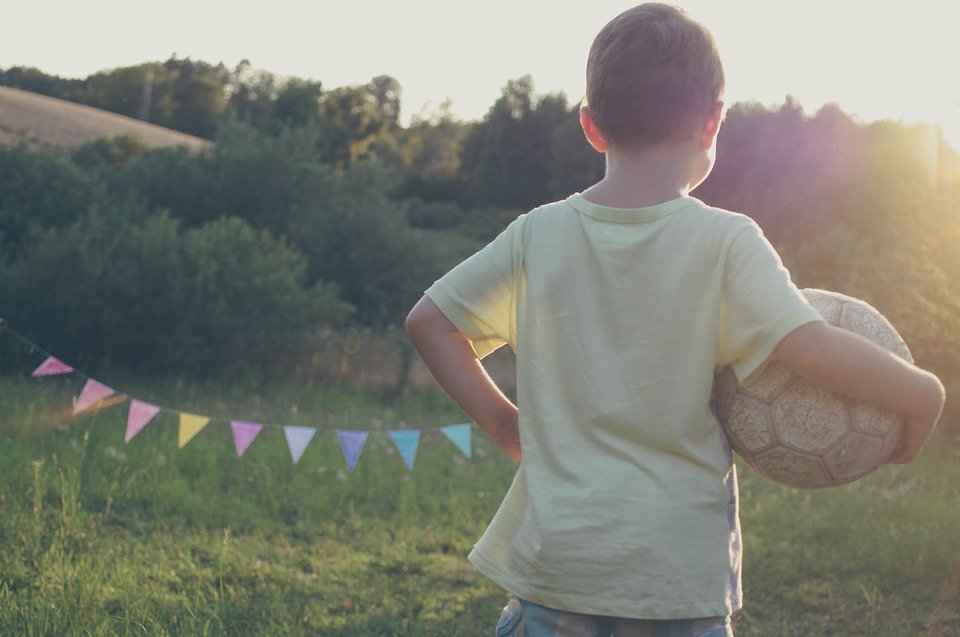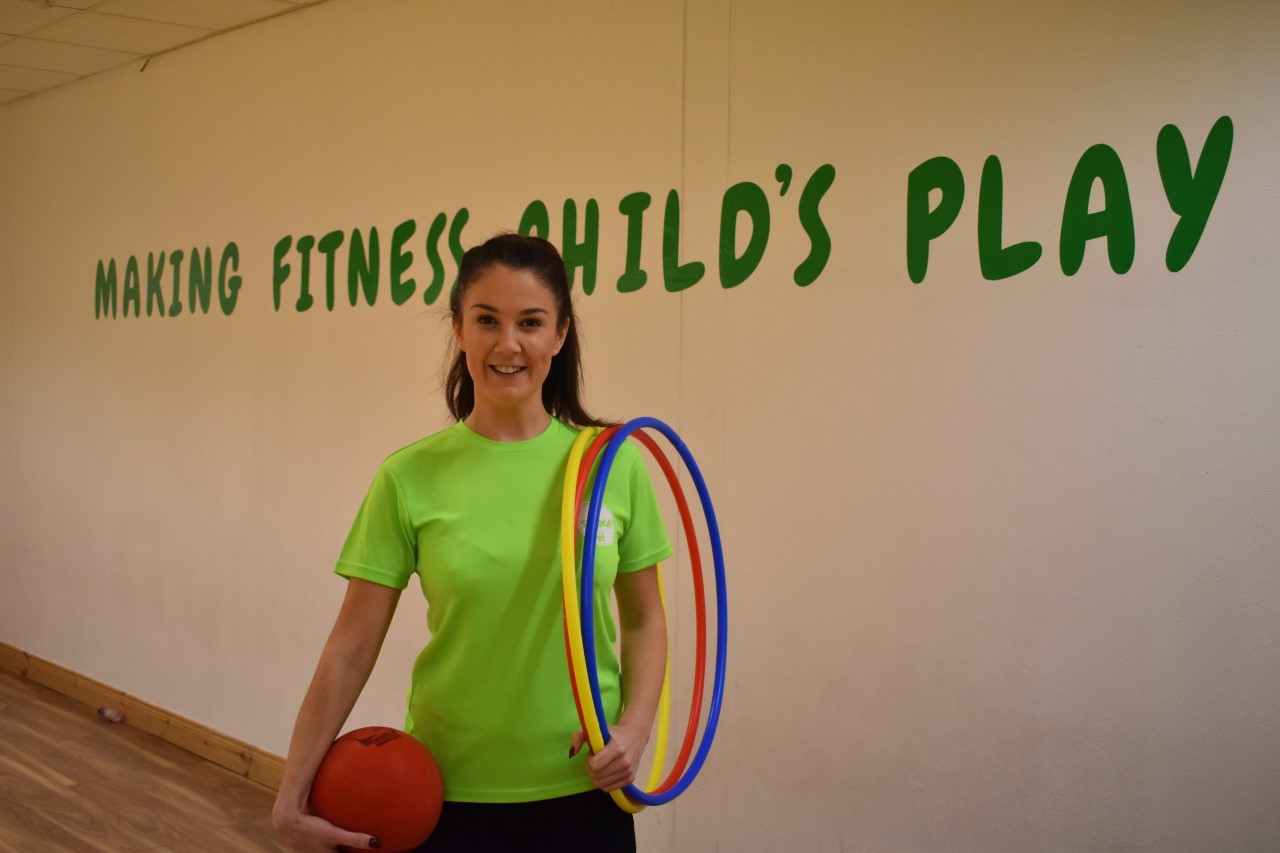
Lockdown is tough on everyone at the minute, but particularly children. They’re out of school, missing their friends and can’t go out to play or take part in their favourite sports.
While they’re cooped up inside, it’s important to remember how vital physical activity is for youngsters, because just like adults, it releases endorphins to boost their mood, it burns plenty of energy so they can have a peaceful night’s sleep – plus it gives them something fun and exciting to do throughout the day, breaking up their regular schedule as they continue to adjust to life at home.
Parents already have so much on their plate, but with a small bit of planning, creating a fitness regime for kids at home has never been easier.
“If you have a look online for two seconds today you’ll see that home-schooling is everywhere. Parents are under an abnormal amount of pressure at the minute as they try to work through subjects they probably don’t understand but PE is not one that’s getting any attention,” says children’s fitness expert, Sarah Gillespie of RINKA Ireland.
“The first thing I’d be saying to parents, is that your priority has to be making sure that your kids come out of this fit and healthy. The last thing you want is for their fitness and overall well-being to go down. We have three tips we’d really ask parents to focus on, which are; keep it simple, keep it fun and keep it regular.”
Easy does it!
You don’t need to create any sort of crazy workout routines for the little ones or spend hours every day working up a sweat; instead, keep it simple and break it down into a few short bursts.
It’s recommended that children exercise for 60 minutes every day, but they can do this in 10, 20 or 30 minute slots, depending on how much time you have at specific periods throughout the day.
Maybe there’s 20 minutes in the morning before school starts, 10 minutes during their break or before dinner and another 20 before bed. You can switch and change these times up to suit you and the little ones, and never need much equipment either.
“Kids are easily pleased. It’s never expensive or difficult to get kids moving. We suggest having a box of open-ended toys, so things like a ball, a hoola-hoop, a skipping rope – things you can get in a discount shop – and you bring out the box twice a day. You can say right, you’ve 20 minutes, off you go, and it’s up to them to make the rules,” said Sarah.
“They use their imagination and they’re away from the screen, burning energy. Concentration levels are better, moods are better, they’re sleeping better. It’s really about just slotting it into the day, making it as normal as possible.”

Struggling on where to start? Sarah suggests three simple exercises they can do from home. If the weather is fine they could go to the garden, or if it’s raining outside, the hall or sitting room will work just fine.
Animal Walks
The reason we suggest these animal walks, is because it works on core strength, cardiovascular health and their balance. By the time you’ve walked up and down the hall like a bear, a giraffe, a seal, a monkey, you’ll be exhausted, but they’re so much fun. You can get them to make the noises too, and they’re working out every muscle in their body without realising what they’re doing.
Obstacle Course
You could make a really simple obstacle course. So, you can get a pair of socks, the sweeping brush, a pile of cushions and a pair of shoes that you can jump around and you’re practising your fundamental skills, so you’re hoping from one, crawling to the next, jumping over one. You can see how many times they can do it in one minute, who can do it backwards, if they can do it with a teddy on their head. It’ll just make it fun.
Dance-off
A dance-off is also great. Pull the curtains in the sitting room, stick on some music and just wiggle. Kids love it. It’s about finding your inner child too. If you stick a child in the sitting room on their own, chances are they will lay down on the sofa but if you do it as a family, it’s suddenly something really silly, it’ll burn loads of energy and they’ll have great fun. Before they know it, 15 or 20 minutes have passed.
Just keep it simple, keep it fun and make it regular; that’s the most important thing.
What to avoid
The main thing you should always steer clear of, is making workouts a chore, or using it as a punishment.
Sarah tells us, “The last thing parents should do is use it as a torture or make it a negative thing, like ‘we have to do this’. It’s never about saying to them, ‘you’ve been naughty today, get your coat on you’re going for a walk’ as that’s encouraging a negative association.”
Also, you should never base their workouts, off an adult’s regime.
“Never tell them, ‘Right, we must exercise, you must strengthen your core today as it’s Monday’. That’s irrelevant. Children are not young adults,” she said.
“Following an adult’s fitness programme isn’t going to work. You’ve got to remember their concentration levels as well so breaking it down into small bursts throughout the day is far more beneficial than dragging them through a full hour of something.”
The best way to get them involved, is by finding activities they’ll enjoy – and if there happens to be a few they dislike, then try leave those particular ones to the side.
“Some kids hate football, so don’t torture them with it, buy a hoola-hoop instead or let them do the dance-off,” Sarah suggests.
“Taking guidance from them and figuring out what will interest them, will help. You don’t need to love sport to love fitness. Parents should introduce the kids to as many forms of fitness as possible and don’t force any one particular thing on them.”

Join in
While you’re working from the dining room, busy helping the little ones with their home-schooling, keeping on top of washing, dinner and general maintenance of your home, the last thing you probably want to do is run around and take part in a children’s workout – but it will help peak their interest. As well as burning some calories of your own running around after them, the kids will be more likely to take part once they see someone else doing it too.
“Kids are spending so much time at home, and the old saying, monkey see, monkey do, is very true. If parents are working from home themselves, they’re at the desk all day long then go sit in front of the tv all evening, it’s very hard to expect a child to take the initiative themselves to work out,” Sarah says.
“If we can take positives out of these lockdowns, it’s a good opportunity for families to develop habits of working out together. Kids love nothing more than to see mummy or daddy on the floor, so it’s an opportunity to do something fun. There’s a huge opportunity for families to create positive habits for health and fitness in their household.”
Build their confidence
Some children shy away from exercise, and this can be down to lack of confidence, self-belief and fear of failing. As a parent, all you can do is offer support and encouragement, helping the little one along the way, wherever you can.
“If a child decides they’re not good at something, this is when they’re going to withdraw from it. By the age of 7, a child will decide if they’re good or not,” Sarah said.
“What I’d say to parents again, is keep it fun. What you should do is put the emphasis on just taking part. Just by trying, you’re already doing a great job.”
Another way to help is, by again, by taking part and showing them how things are done. For example, every child needs to be taught how to walk, swim or jump so by getting involved and helping them along the way, it’ll boost their confidence as their skills grow.
“Parents should take time to develop skills with them. It’s really about remembering that children are empty vessels and it’s about what you put into them. The more it’s done, the most comfortable they feel and the more natural it come to them,” Sarah advises.
“The other thing too, is to not berate a child for not doing well at something. It’s all about encouraging, keeping it fun and keeping it positive while letting them develop skills and experiment.”
If you’d like some more guidance on at-home workouts for the little ones, the RINKA group upload free 20-30 minute videos three times a week on their Facebook page, which require no equipment at all. Parents can check into these at any time that suits their schedule, and follow along from the comfort and privacy of their living room.




